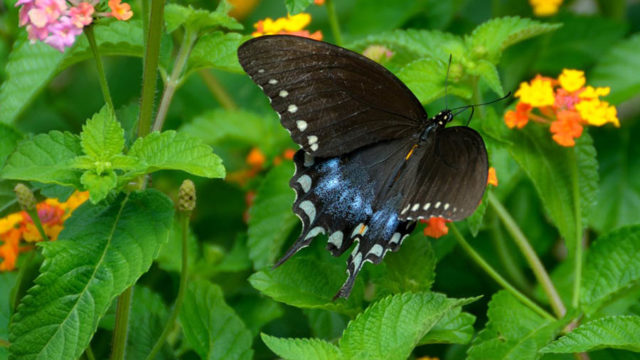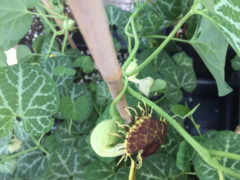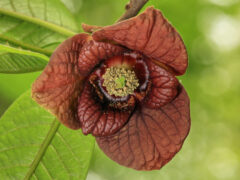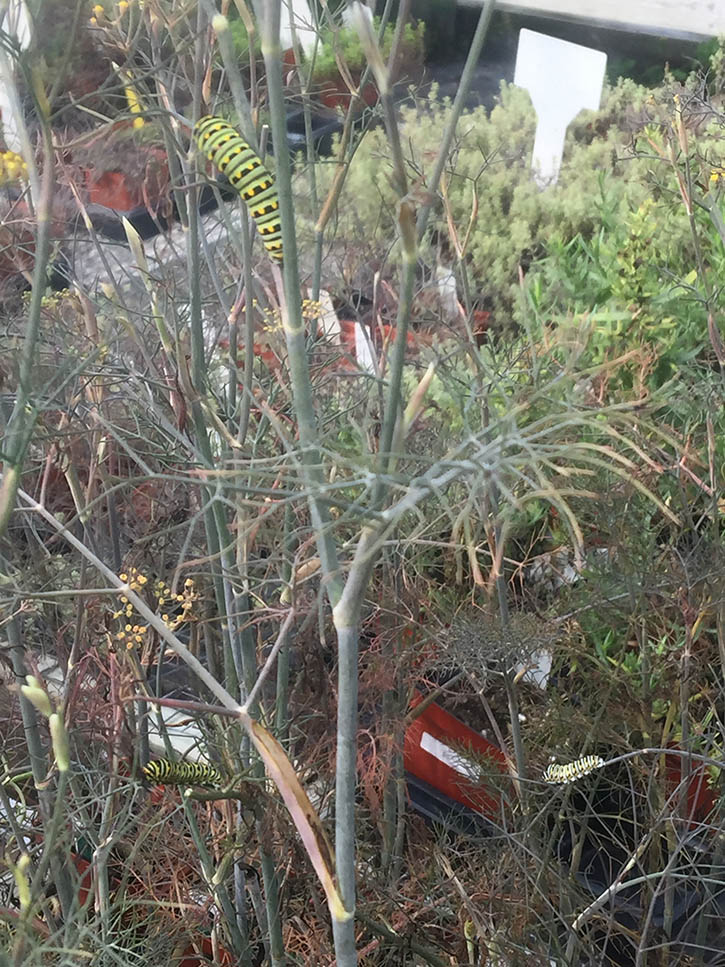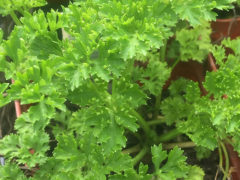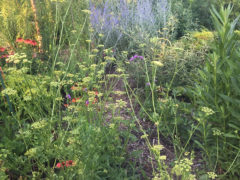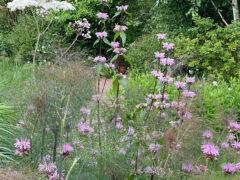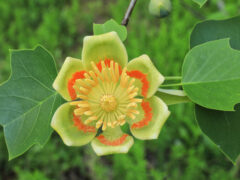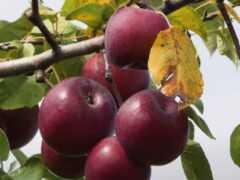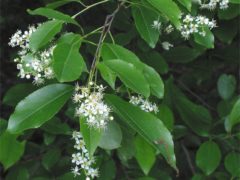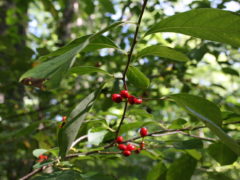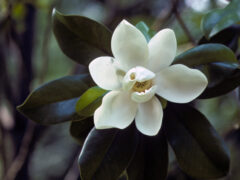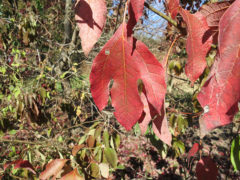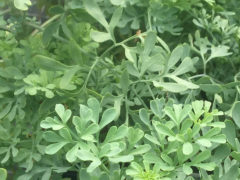There are over 550 swallowtail species worldwide, and six of them live in the Kansas City area. You can support them by planting gardens to feed them at every stage of life, starting with the caterpillars. These six swallowtail butterflies are looking for the plants listed below to lay their eggs. If you plant them, chances are good you’ll see these swallowtails in your garden. Include great nectar flowers and you’ll have happy butterflies hanging around all season.
Pipevine swallowtail
One of four black swallowtails in the Kansas City area, this one tastes bad and might even be toxic to some predators.
white-veined Dutchman’s pipe
Aristolochia fimbriata
Small rounded leaves are highlighted with striking silver veining and covered all summer with 1" long, yellow and brown flowers that look like little pipes . The only ornamental downside is that Aristolochia is a delicacy for pipevine swallowtail butterfly larvae in midsummer...less foliage, but more butterflies!
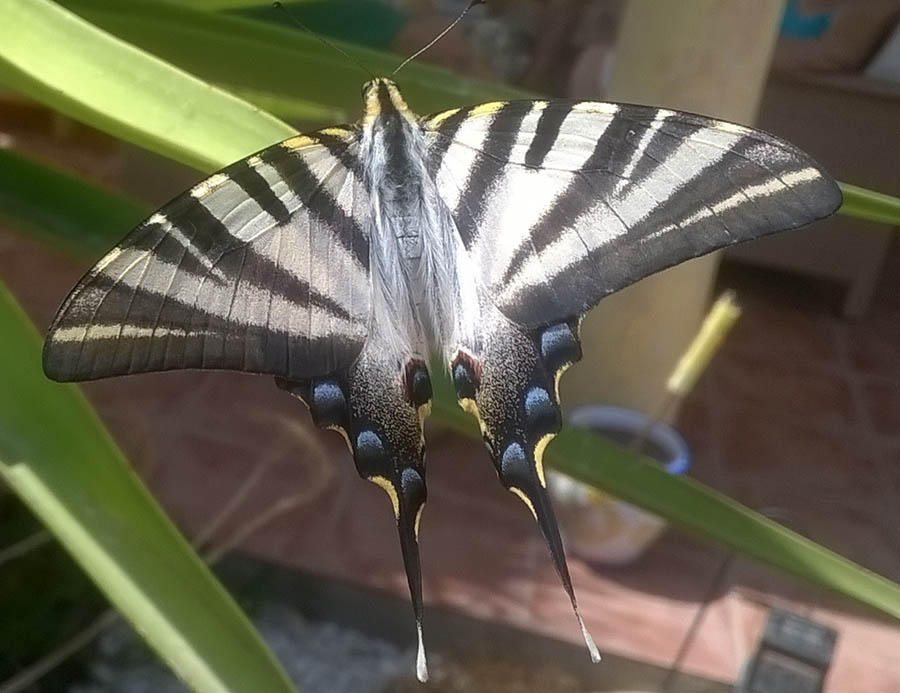
Zebra swallowtail
Spring and summer broods look a little different in size, and summer butterflies have fewer red spots. Zebra swallowtails have shorter “tongues” and so require blooms with shorter necks for nectaring.
pawpaw
Asimina triloba
This native understory tree or large shrub grows 15-20’ tall (sometimes to 30’) and occurs naturally in low bottom woods, wooded slopes, ravines and along streams. Cup-shaped, purple flowers in spring give way to edible, oblong, yellowish green fruits which mature in early autumn to a dark brown. Flavor and fleshy consistency resemble bananas. Wildlife eagerly seek out the fruits and often beat humans to the harvest!
Larval host to zebra swallowtail butterfly.
Opossums, foxes, squirrels, raccoons, and birds are all known to enjoy pawpaw and are likely to be closely watching for ripe fruits.
CLICK HERE to check current availability and preorder fruit trees on our webstore.
Black swallowtail
Black swallowtails benefit from the pipevine swallowtail’s reputation among predators for toxicity. This common butterfly is fun to raise.
(see a photo of the adult butterfly at the top of the blog)
parsley curly / Italian flat leaf
Petroselinum crispum/Petroselinum crispum var. neapolitanum
High in Vitamins A and C, and iron. In addition to having a distinctive fresh flavor, parsley is also a favorite butterfly host for the black swallowtail butterfly. Technically biennial, plants often return for a second season and bolt with flower clusters followed by seeds. Choose from curly-leafed variety and Italian flat leaf, which grows taller with glossy, dark-green leaves preferred by some cooks for a sweeter, more robust flavor. Grow extra for the butterflies!
‘Bouquet’ /’Fernleaf’ dill
Anethum graveolens
Delicious, easy to grow, tangy dill provides both seeds and greens to flavor many foods. This variety blossoms early with large seed umbels and foliage for pickling, and is the most widely grown. Plant some for the butterflies! 'Fernleaf' is a cultivar growing only 18" tall with abundant dark blue-green foliage. Very slow to bolt. 1992 All-America winner. Use dill in soups, salads, breads, pickles, fish, and salt-free herb seasoning blends. Self-seeding annual.
bronze leaf fennel / fennel
Foeniculum vulgare
The delicate, ferny foliage adds wonderful ornamental texture contrast, and the dark bronze variety mixes beautifully with green and golden foliage. Leaves make a flavorful addition to salads, cole slaw, and dressings. Plants produce seed the second year after overwintering. Harvest bulbs the second year to allow crop to increase.
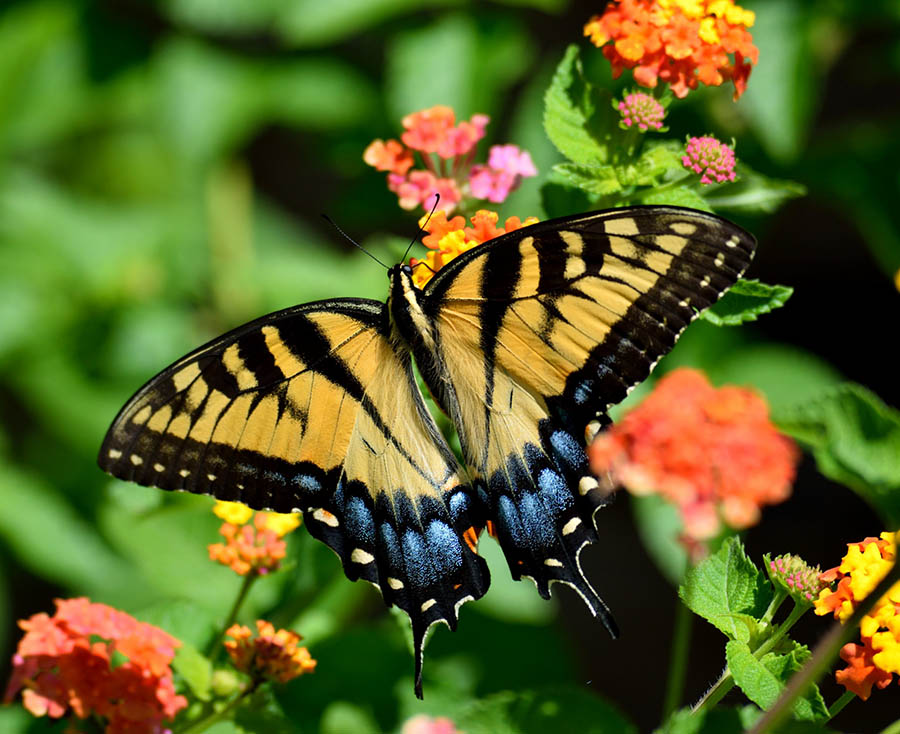
Eastern Tiger swallowtail
Males are always yellow, but the females of this butterfly can be yellow or black.
tulip tree
Liriodendron tulipifera
Tulip trees are fast growers, often measuring growth of more than 2' per year. Tulip-shaped flowers with greenish-yellow petals and a splash of orange in May and June make a striking show, followed by vibrant yellow foliage in the fall. This native tree provides food in many forms for many animals, most notably the Eastern Tiger Swallowtail butterfly.
Apple
Malus domestica
CLICK HERE to check current availability and preorder fruit trees on our webstore.
‘Braeburn’ apples were discovered in 1952 as a chance seedling growing in a New Zealand orchard. The parentage is unclear, but both ‘Lady Hamilton’ and ‘Granny Smith’ apples were growing on nearby trees. Produces medium-sized yellow fruit. Self-fertile but production is improved when planted with a pollinator partner.
‘Cortland’ produces large red apples that are extra juicy, with a tangy sweet-tart flavor. Excellent in fresh salads, as flesh does not brown after cutting. Good eating, canning, and pie apple. Ripens in mid to late September.
‘Fuji’ was developed in Japan, but is an all-American cross of ‘Red Delicious’ and ‘Ralls Janet’. A very attractive modern apple, crisp, sweet-flavored, and keeps well, which is why they are often available in the grocery store.
‘Gala’ apples were discovered in 1934 in New Zealand and made their way into the U.S. market in the 1970s. Fruit is pale golden yellow with red stripes, with a firm, crisp interior that is mildly sweet and vanilla-like. Has thinner skin than most. Self-fertile but production is improved when planted with a pollinator partner.
‘Granny Smith’ apples originated in Australia in 1868 when Maria Ann (Granny) Smith found a seedling growing by a creek on her property and found the light green fruit to be great for both cooking and snacking. Self-fertile but production is improved when planted with a pollinator partner.
'Gravenstein' dates back to the 17th century and is still one of the best apple varieties for cooking, sauce, and cider. Large, bright green apples with red striping are crisp and juicy with a nice tart flavor with just a hint of honey. They make very flavorful sauces and ciders. These apples keep well and hold up well for shipping. Ripens in July.
‘Honeycrisp’ has flavor, crispness, and a storage life of up to 7 months. Mid to late season apple ripens in late September. Considered one of the best.'Honeygold' are sweet and crisp, great for eating fresh, baking, or making applesauce. They have a honey-like flavor and are medium to large in size, with a golden-yellow to greenish skin and a red-bronze blush. Developed by the University of Minnesota in 1970, Honeygolds are a cross between 'Golden Delicious' and 'Haralson'. They're well-suited for cold climates because of their Haralson parent.
'Liberty' is a late harvest apple with red skin — juicy and crisp with tart flavor. Great for fresh eating and resistant to scab, fireblight and cedar apple rust. This variety was actually named for freeing growers from endless spraying! One of the most favored grown or eaten anywhere, ‘McIntosh’ apples are soft, sweet, and juicy. Ripens early to mid-September. Self-fertile but production is improved when planted with a pollinator partner. 'Northern Spy' is an antique from the 1840s. Great for fresh eating and baking, it has an excellent reputation for making the best apple pies! Juicy and tart. 'Prairie Spy' was one of the first apples to come out of the University of Minnesota breeding program, selected in 1923 and released in 1940. This apple was bred specifically for cold hardiness and produces fruit great for fresh eating or baking, holding its form well in pies and storing well through winter. It is a large, attractive apple with yellow skin streaked red and speckled with pretty white lenticels. The creamy white flesh is firm and dense with an excellent, well-balanced flavor. Very cold hardy, this tree is vigorous and fruits reliably. Resistant to cedar-apple rust. ‘Red Delicious’ produces medium-sized, striped to solid red fruit. Light yellow, crisp and sweet flesh. Fresh eating and salad variety. Semi-dwarf (12-15’ tall, 14’ wide). Late blooming. 'Rome Beauty' was discovered in 1820 as a chance seedling near Rome, Ohio. Known as the ‘baker’s buddy’ for its ability to retain its round shape and tangy flavor during cooking, they're also a favorite for cider, salads and fresh eating. Medium to very large fruit is striped over red, thick skin. A good keeper on and off the tree. Scab-resistant and late blooming, it's a good choice where hard freezes in late spring are common. 'Snow Famuse' apple is one of the oldest and most sought-after dessert apples. A parent of the aromatic McIntosh, Snow apple trees were found in almost every French settlement in the late 1700s and made their way around the world. The flesh is tender, spicy, and distinctive in flavor, and snow white in color with occasional crimson stains near the skin. Snow apple is a very hardy, heavy-bearing heritage fruit tree excellent for home orchards. Delicious fresh off the tree, in cider, or cooked. One of the very few apples that often reproduce true to variety when established from seed. ‘Yellow Delicious’ produces medium-sized, bright golden-yellow fruit. Firm, crisp and juicy flesh. Good for fresh eating and cooking. Semi-dwarf (12-15’ tall, 14’ wide). ‘Winesap’ is an old apple cultivar of unknown origin.[1] The apples are sweet with a tangy finish. It can be used for eating, cooking, or making juice. It is very resistant to mildew. dark red, round, medium-sized; the skin of this apple is firm, and the flesh is crisp and exceptionally juicy with a creamy yellow hue. ‘Winesap’ apples are highly aromatic with a balanced sweet-tart taste and get their name due to their distinctive spicy wine-like flavor. Grow a two-tiered 4 way or three-tiered six-way apple and get multiple, cross-pollinating varieties on one small fruiting espalier!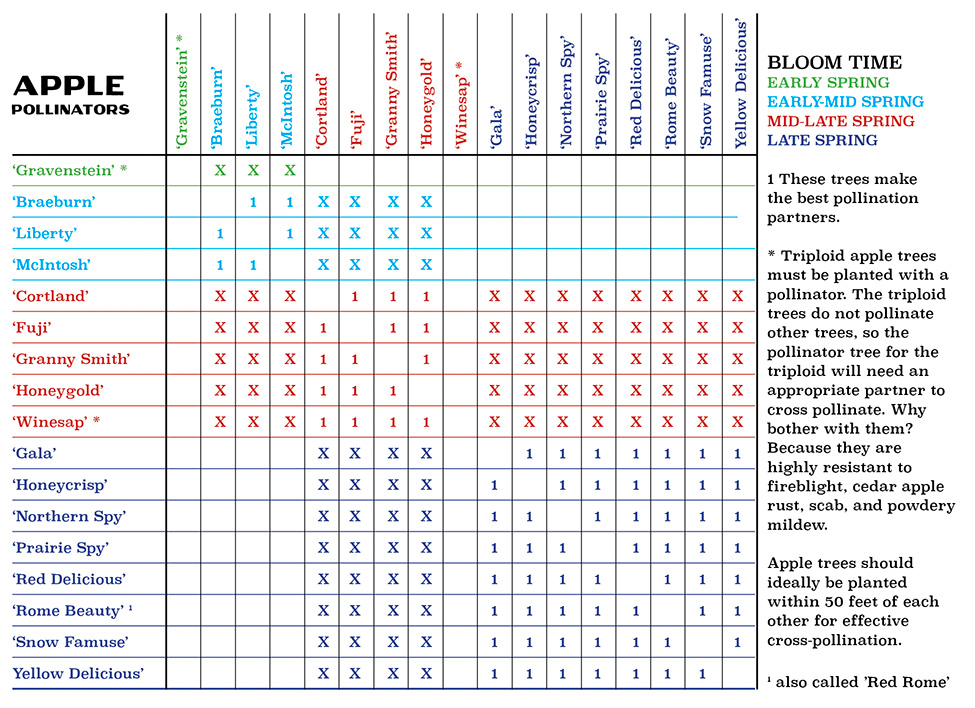
black cherry
Prunus serotina
This native ranges from southeastern Canada through the eastern US, and west to Texas. White flowers open after the glossy leaves have emerged, and dark red fruit changes to black from August through October. Fall foliage is yellow. According to the Lady Bird Johnson Wildflower Center, the fruit of the black cherry tree is eaten by 33 species of birds and many mammals, and is a larval host to Eastern Tiger Swallowtail, Cherry Gall Azure, Viceroy, Columbia Silkmoth, Promethea Moth, Small-eyed Sphinx Moth, Wild Cherry Sphinx Moth, Banded Tussock Moth, Band-edged Prominent, Spotted Apatelodes.
spicebush
Lindera benzoin
Large, multi-stemmed shrubs have aromatic twigs and foliage. Spicebush is an important native plant for birds and a larval host plant for the spicebush swallowtail. Male and female flowers occur on separate plants, and the females have bright red fruits in fall.
sweet bay magnolia
Magnolia virginiana
Sweet Bay comes from a cooler, northern range and blooms later avoiding late frost damage to flower petals as often happens with southern magnolias in our area. Native to the southeastern US and north along the Atlantic coast to New York. In the northern part of its cultivated growing range, it typically grows 15–20’ tall tree with a spreading, rounded crown. It has no serious insect or disease problems, tolerates clay soil, wet soil, air pollution, and prefers sun to partial shade.
Spicebush swallowtail
Their larval host plants are less common, so these butterflies are also fewer in number. Plant spicebush and pawpaw and you just might find them in your garden.
spicebush
Lindera benzoin
Large, multi-stemmed shrubs have aromatic twigs and foliage. Spicebush is an important native plant for birds and a larval host plant for the spicebush swallowtail. Male and female flowers occur on separate plants, and the females have bright red fruits in fall.
sassafras
Sassafras albidum
Trees have three distinctly different 3-5” long leaves: three-lobed, mitten-shaped, and simple, that turn red, yellow and orange in fall. Sassafras grows quickly, up to 3 to 4 feet in height each year for the first ten years in the right conditions. Tolerant of poor soils and drought once established, almost deer-proof. Trees grow best in full sun to light shade — their natural culture is along the forest edge. Although tolerant of poor soil, Sassafra grows best in rich, acidic, well-drained soil. Spreads by suckers to produce a thicket, but the suckers are easily removed if you prefer an individual tree. Consider Sassafras for screening and erosion control. Fall color ranges from intense golden yellow in shadier places to scarlet, orange, and deep reds in sun. Sassafras is dioecious, so male and female parts are on separate trees. Both are necessary, along with pollinators, to produce fruit. Yellow flowers appear for about one week in April and May before leaves emerge. Flowers are a bit larger on the male tree. Female trees produce dark blue fruit on stems that turn scarlet-red as fruit ripens. High fat fruit is an important food source for many birds. Larval host plant to Eastern Tiger Swallowtail and Spicebush Swallowtail butterflies, and Promethea, Imperial, Palamedes, Io, and Silk moths. Sassafras is also an excellent wildlife food source for many species of birds and mammals.
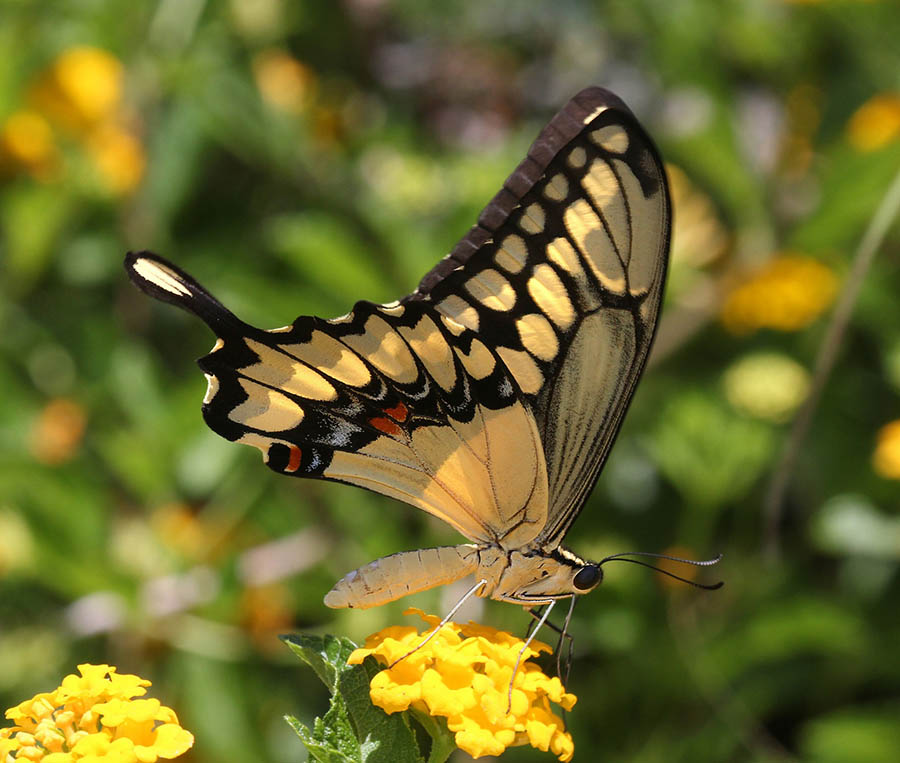
Giant swallowtail
Caterpillars resemble bird droppings as a smart defense from predators. In citrus growing regions they can become a pest — cats eat foliage of citrus trees.
rue
Ruta graveolens
Lacy blue-green ornamental herb is known as the “herb of grace.” Rue was once thought to cure a wide range of ills, but is now grown mostly as an ornamental and insect repellent. It’s bitter flavor is used in cooking in northern African foods. NOTE: Some people have skin sensitivity to this plant that can resemble poison ivy blistering. Larval host for Black Swallowtail, Anise Swallowtail, and Giant Swallowtail butterflies! https://www.youtube.com/shorts/dDRHgl-YgNo
